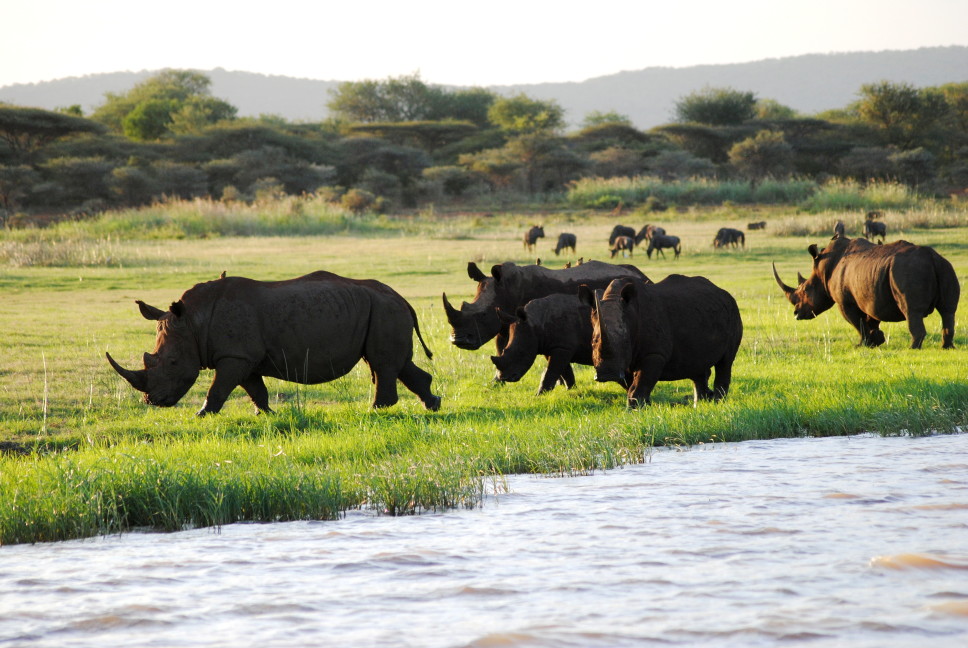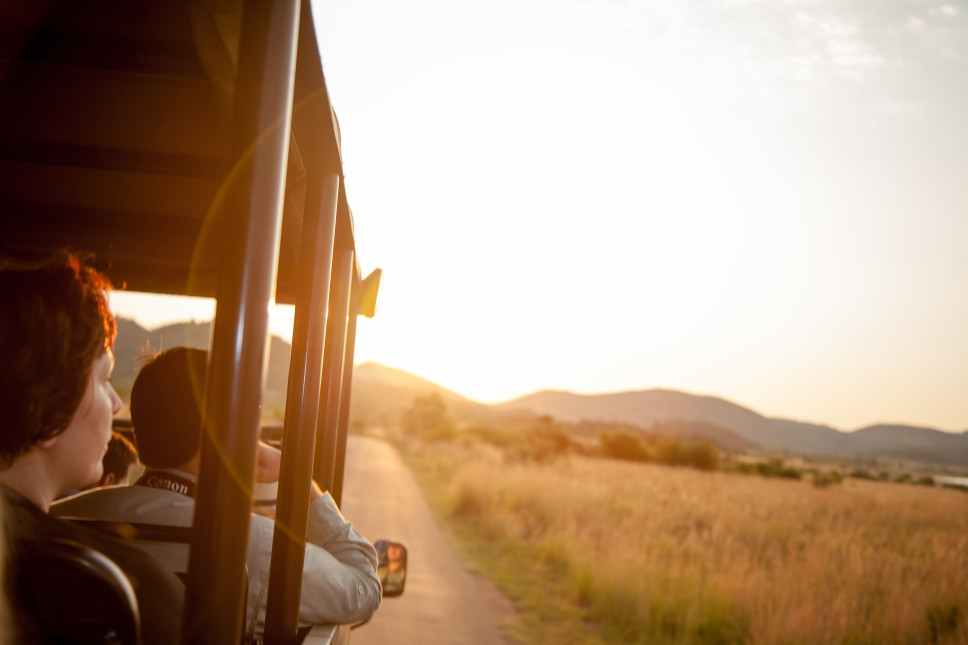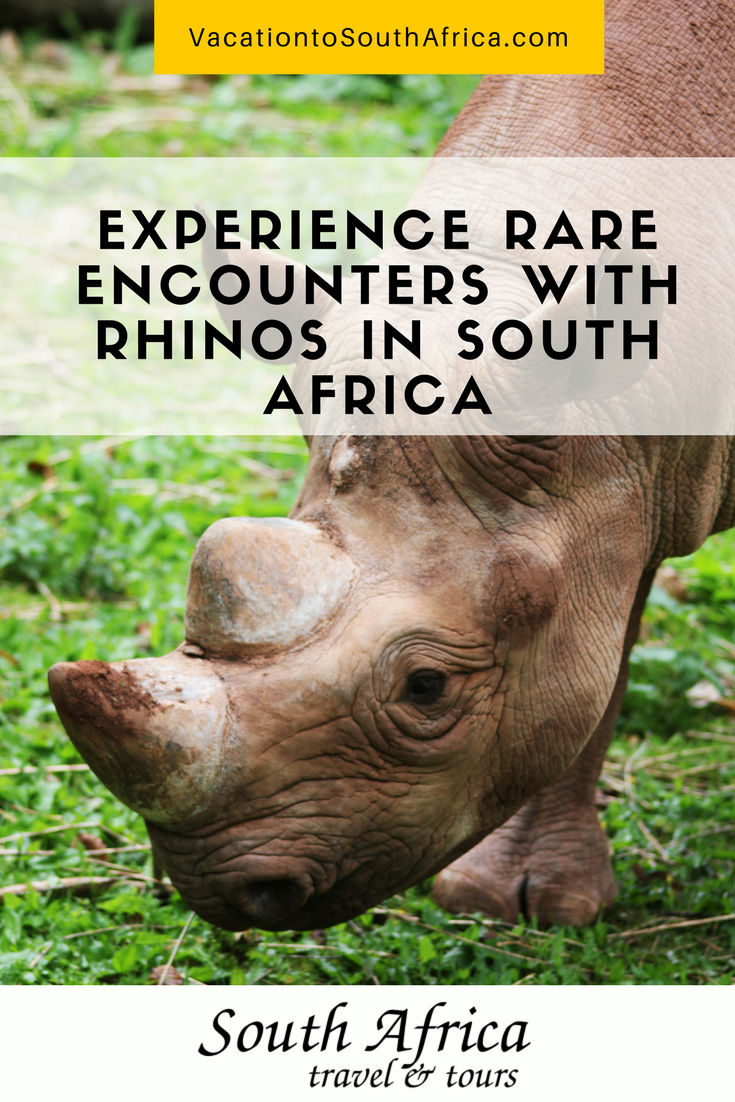There are enough activities and sights across South Africa to keep an itinerary packed for months. However, the primary reason a person makes the journey to South Africa is to go on safari. Visitors participating in game drives are eager to catch a glimpse of the rarest of the Big Five: the rhinoceros.
Game drives are timed for optimal viewing, but the rhinoceros is becoming increasingly elusive. The rhino population worldwide is dangerously low. In fact, one subspecies of South Africa’s White Rhinoceros, the Northern White Rhinoceros, is now extinct — the victim of being poached for its horns, like the African elephant.
Safaris serve two purposes in South Africa. They provide people with the opportunity to experience majestic African wildlife in the wild, but more importantly, they provide visitors with a hands-on education in wildlife conservation.
Eco-Tourism’s Role in Rhino Conservation
South Africa works diligently to conserve its most precious resource: its wildlife. Rhinoceros are an important part of tourism in South Africa and tourism is an important part of conserving this delicate, endangered species. Eco-tourism’s core focus is educating the public about conservation and raising money to support the effort.
South Africa is fighting an uphill battle against poachers who are investing in new and innovative ways to target rhinos within its borders. Parks like Kruger National Park survive off the tourism industry and use the funds raised and profits earned from safaris to continue their ongoing conservation initiatives to combat the poaching epidemic.
South Africa is home to 90% of the world’s rhinoceros population and has gone to great lengths to protect and sustain it. Because South Africa has largest population of White Rhinoceros and, rarer, Black Rhinoceros, visitors can see both if they plan their safaris accordingly. Guests can feel good about their vacation too. Game lodges and game drives that do not outwardly market themselves as “eco-safaris” still work hard to maintain a small ecological footprint and educate guests about conservation efforts.
Luxurious Safari Lodges with Rhino-Friendly Conservation Initiatives
1. Motswari Private Game Reserve. Motswari shares an open 12 mile boundary with world-renowned Kruger National Park, allowing for many opportunities for game viewing — including an abundance of White Rhinoceros. Motswari means “to conserve and protect” in Tswana. The Timbavati Private Nature Reserve within Motswari lives up to that promise and funds a Rhino Anti-Poaching Unit equipped with specialized field ranger equipment and training.
2. Sabi Sands Game Reserve. Arathusa Safari Lodge is located in the Sabi Sands Game Reserve, sharing a 31 mile unfenced boundary with Kruger. In addition to viewing White Rhinoceros and occasionally Black Rhinoceros, a portion of the proceeds from the lodges within Sabi Sands go towards rhino poaching awareness and prevention.

Rhinoceros are an important part of tourism in South Africa and tourism is an important part of conserving this delicate, endangered species.
3. Kapama Private Game Reserve. At the edge of Kruger National Park lies the Kapama River Lodge. Kapama provides 5-star safari accommodations against the stunning backdrop of the Drakensberg mountains — a picturesque location for game viewing. Kapama protects the biodiversity of the region through their Anti Poaching Unit (APU), which patrols the reserve both on and off foot, in search of wildlife traps and poachers.
4. Black Rhino Game Lodge. Pilanesberg National park has a higher concentration of Black Rhino per square mile, so your chances of seeing one increase exponentially. It is home to the Black Rhino Game Lodge which offers comfortable accommodations and private rhino tracking expeditions. A portion from each booking goes to the Pilanesberg Wildlife Trust. The trust gives priority to projects that protect the rhinos in the park from poachers.
Travelers interested in learning more about South Africa’s conservation efforts should consider eco-safaris that include trips to Hoedspruit’s Endangered Species Centre or the Moholoholo Rehabilitation Centre. Guests can learn about innovative conservation efforts, discover new species, and experience South Africa’s wildlife up-close.
For more tips, ideas, and advice for seeing all there is to see in South Africa, visit us at westcuratedtravel.com.

